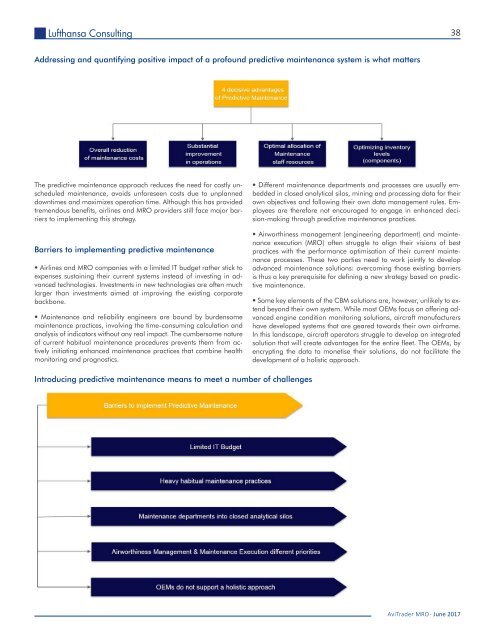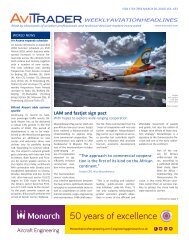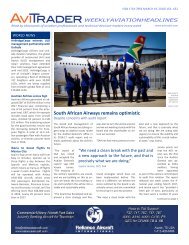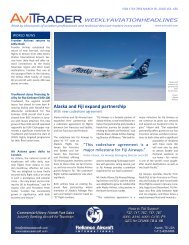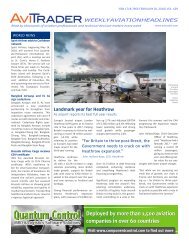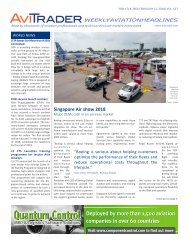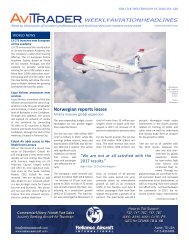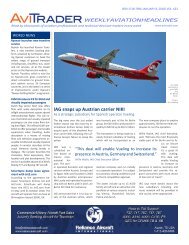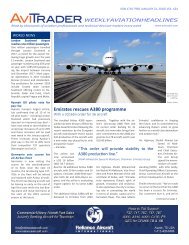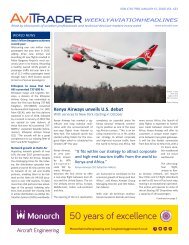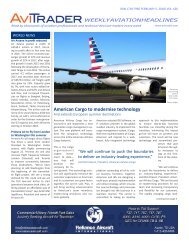Create successful ePaper yourself
Turn your PDF publications into a flip-book with our unique Google optimized e-Paper software.
Lufthansa Consulting<br />
38<br />
Addressing and quantifying positive impact of a profound predictive maintenance system is what matters<br />
The predictive maintenance approach reduces the need for costly unscheduled<br />
maintenance, avoids unforeseen costs due to unplanned<br />
downtimes and maximizes operation time. Although this has provided<br />
tremendous benefits, airlines and <strong>MRO</strong> providers still face major barriers<br />
to implementing this strategy.<br />
Barriers to implementing predictive maintenance<br />
• Airlines and <strong>MRO</strong> companies with a limited IT budget rather stick to<br />
expenses sustaining their current systems instead of investing in advanced<br />
technologies. Investments in new technologies are often much<br />
larger than investments aimed at improving the existing corporate<br />
backbone.<br />
• Maintenance and reliability engineers are bound by burdensome<br />
maintenance practices, involving the time-consuming calculation and<br />
analysis of indicators without any real impact. The cumbersome nature<br />
of current habitual maintenance procedures prevents them from actively<br />
initiating enhanced maintenance practices that combine health<br />
monitoring and prognostics.<br />
• Different maintenance departments and processes are usually embedded<br />
in closed analytical silos, mining and processing data for their<br />
own objectives and following their own data management rules. Employees<br />
are therefore not encouraged to engage in enhanced decision-making<br />
through predictive maintenance practices.<br />
• Airworthiness management (engineering department) and maintenance<br />
execution (<strong>MRO</strong>) often struggle to align their visions of best<br />
practices with the performance optimisation of their current maintenance<br />
processes. These two parties need to work jointly to develop<br />
advanced maintenance solutions: overcoming those existing barriers<br />
is thus a key prerequisite for defining a new strategy based on predictive<br />
maintenance.<br />
• Some key elements of the CBM solutions are, however, unlikely to extend<br />
beyond their own system. While most OEMs focus on offering advanced<br />
engine condition monitoring solutions, aircraft manufacturers<br />
have developed systems that are geared towards their own airframe.<br />
In this landscape, aircraft operators struggle to develop an integrated<br />
solution that will create advantages for the entire fleet. The OEMs, by<br />
encrypting the data to monetise their solutions, do not facilitate the<br />
development of a holistic approach.<br />
Introducing predictive maintenance means to meet a number of challenges<br />
<strong>AviTrader</strong> <strong>MRO</strong> - June <strong>2017</strong>


